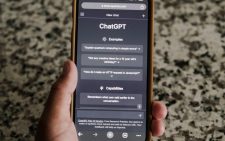One in 10 children born in Kenya have clubfoot

Kenya has joined the global community in commemorating World Clubfoot Day.
On June 3, 2025, Kenyatta National Hospital (KNH) celebrated the event with a walk aimed at raising awareness about the importance of early treatment for this condition.
Statistics show that one out of 10 children is born with a hereditary trait of somebody with clubfoot.
KNH CEO William Sigilai underscored the need for early intervention, consistent treatment and community awareness to ensure positive outcomes for children with clubfoot.
In his sentiments, he urged healthcare workers, stakeholders, parents and partners to continue working together to eliminate untreated clubfoot in Kenya.
The CEO acknowledged Clubfoot Care Kenya for their unwavering support and partnerships in terms of supplying equipment for correcting clubfoot among the children.
The goal of World Clubfoot Day is to raise awareness about those with the disability, and its prevention using the Ponseti Method, a non-surgical treatment that includes gentle manipulation of the feet followed by the application of plaster casts and temporary bracing.
Dr John Ondiege, a consultant for prosthetist and orthotist at KNH, stated that clubfoot is the second most common disabling condition in children after cerebral palsy.
He underscored the risks associated with surgical interventions for clubfoot.
“Once you cut the foot and it recurs, the scar will not let the tendon stretch. If there is a recurrence, it calls for a second operation or a major one involving bone osteotomy,’’ he warned.
Outdated myths
The specialist revealed that he has played a role in pioneering, in terms of introducing conservative clubfoot management in Kenya, a method that avoids surgery.
This happens through offering training to surgeons who focus on managing clubfoot without surgery.
‘’In KNH, we see 20 children with clubfoot weekly and the prevalence is more common among the boys than the girls in a ratio of two ration one,” he revealed.
Ondiege urged parents not to hide their children with clubfoot but to seek free treatment at facilities.
He dismissed common myths surrounding the condition, stressing that it occurs in children with conditions like spinal bifida or osteogenesis imperfecta.
Isaac Mutua, Counselling Coordinator for Clubfoot Care Kenya (CCK), said they have partnered with 29 hospitals across the country to manage treatment for non-surgically clubfoot using the Ponseti method.
Clubfoot is a congenital condition affecting one in every 1,000 births.
“Clubfoot is a congenital condition affecting roughly one in every 1,000 births worldwide, which can lead to lifelong disability if untreated,’’ he explained, underscoring the importance of early intervention and treatment once the child is born, since at that point, the bones are still soft, hence making it easy to manipulate.
‘’We are encouraging parents to take their children to the clinic for correction as early as possible if the child is born with clubfoot. Correcting it at an early stage makes it easier to manage the treatment,” he added.
Mutua pointed out that the treatment is completely free with services from trained clinicians through CCK supplying free plasters, the soft band and the foot abduction braces for correcting the condition.
In addressing stigmatisation, Mutua noted that CCK has assigned counsellors to each clinic who provide psychological support, encouraging families to seek early treatment and also creating awareness through public forums.














